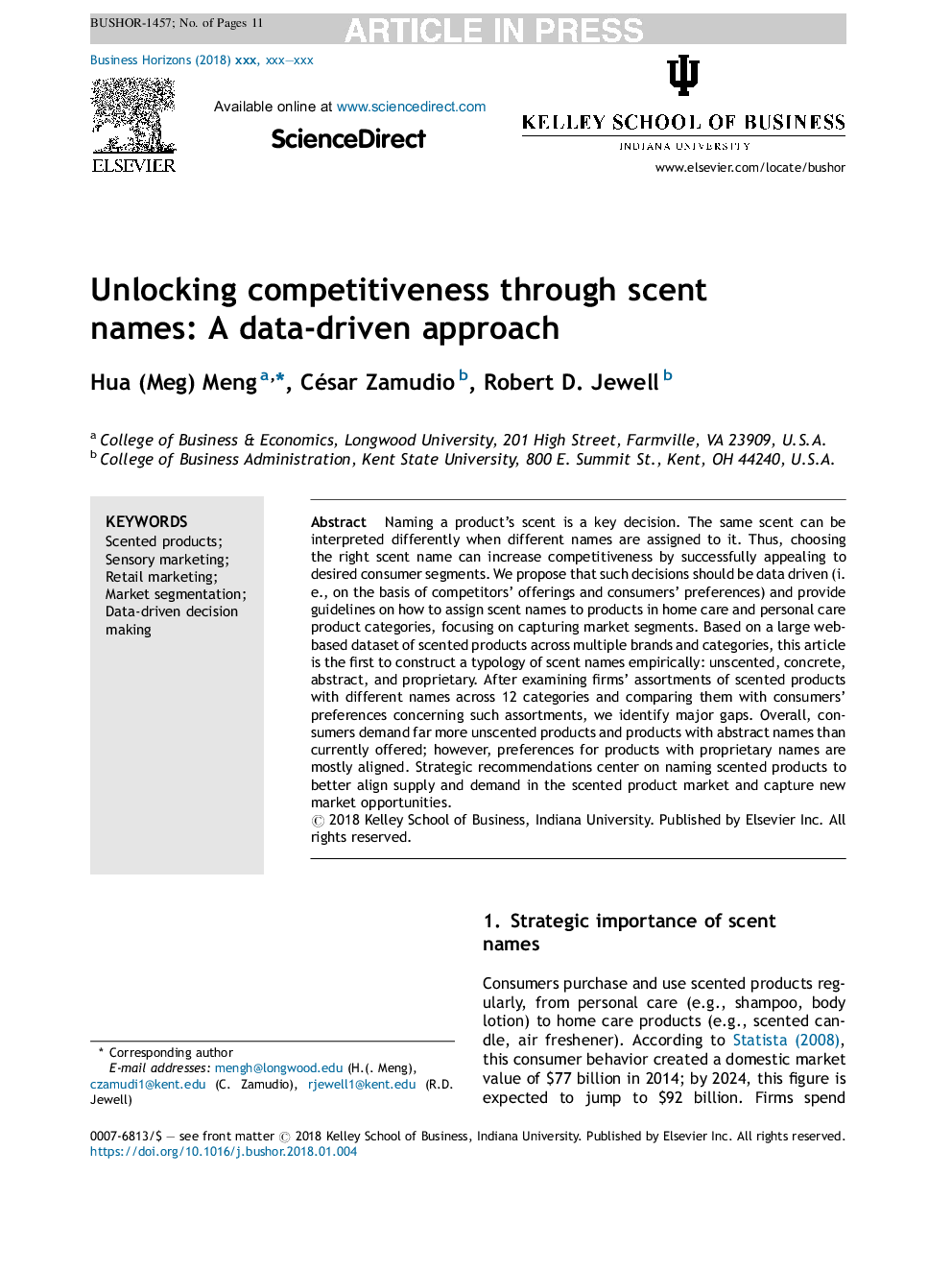| Article ID | Journal | Published Year | Pages | File Type |
|---|---|---|---|---|
| 7423085 | Business Horizons | 2018 | 11 Pages |
Abstract
Naming a product's scent is a key decision. The same scent can be interpreted differently when different names are assigned to it. Thus, choosing the right scent name can increase competitiveness by successfully appealing to desired consumer segments. We propose that such decisions should be data driven (i.e., on the basis of competitors' offerings and consumers' preferences) and provide guidelines on how to assign scent names to products in home care and personal care product categories, focusing on capturing market segments. Based on a large web-based dataset of scented products across multiple brands and categories, this article is the first to construct a typology of scent names empirically: unscented, concrete, abstract, and proprietary. After examining firms' assortments of scented products with different names across 12 categories and comparing them with consumers' preferences concerning such assortments, we identify major gaps. Overall, consumers demand far more unscented products and products with abstract names than currently offered; however, preferences for products with proprietary names are mostly aligned. Strategic recommendations center on naming scented products to better align supply and demand in the scented product market and capture new market opportunities.
Related Topics
Social Sciences and Humanities
Business, Management and Accounting
Business and International Management
Authors
Hua (Meg) Meng, César Zamudio, Robert D. Jewell,
